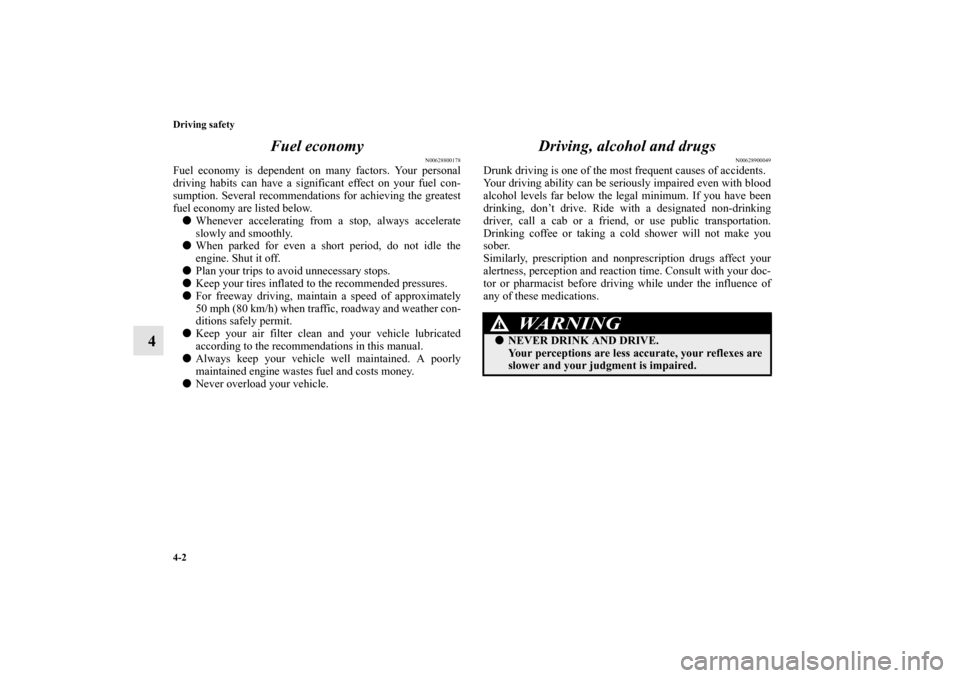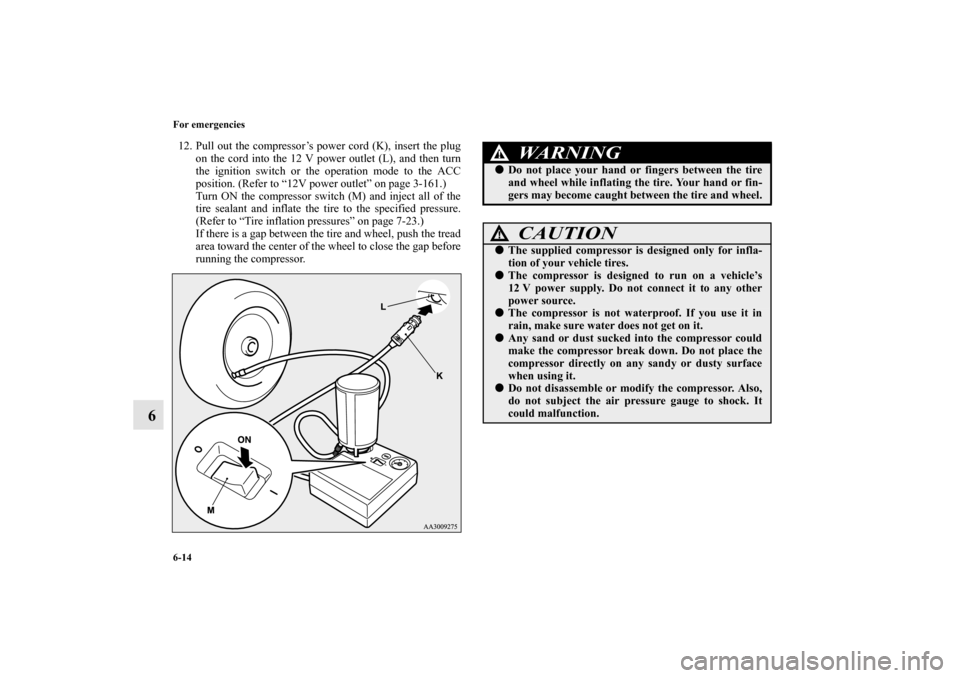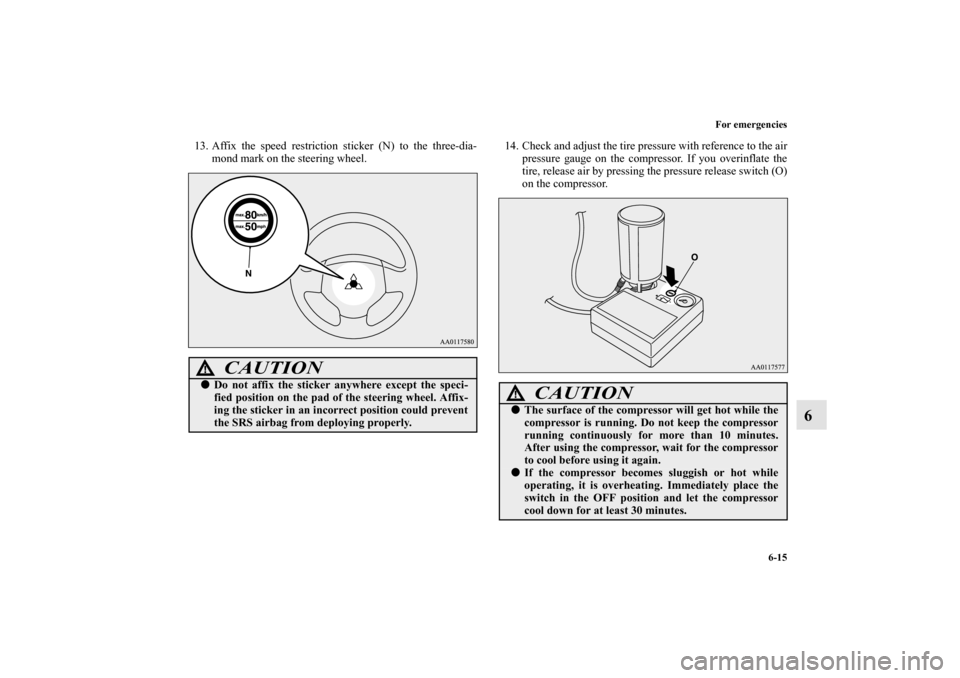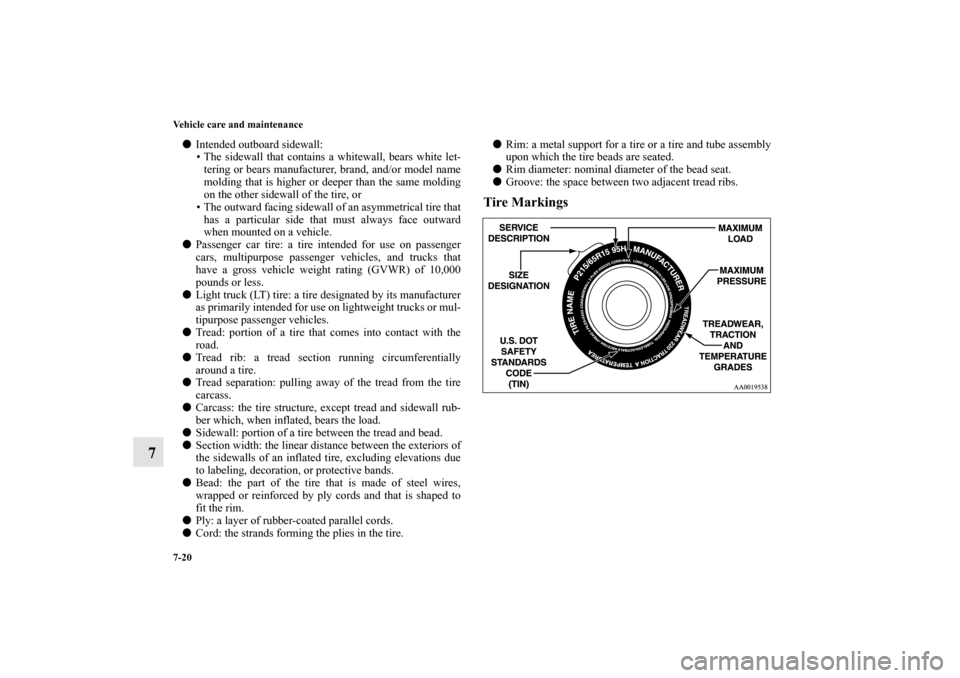Page 151 of 460

Features and controls
3-63
3
When the selector lever cannot be shifted from the “P”
(PARK) position
N00563300049
When the selector lever cannot be shifted from the “P” (PARK)
position to another position while the brake pedal is pressed
and held down with the ignition switch or the operation mode
in ON, the battery may be flat or the shift-lock mechanism may
be malfunctioning.
Immediately have your vehicle checked by an authorized
Mitsubishi Motors dealer or a repair facility of your choice.
If you need to move the vehicle, shift the selector lever as fol-
lows.
1. Make sure the parking brake is fully applied.
2. Stop the engine if it is running.
3. Insert a screwdriver with a cloth over its tip into the notch
(A) of the cover. Pry gently as shown to remove the cover.4. Depress the brake pedal with the right foot.
5. Insert a screwdriver in the shift-lock release hole (B).
Shift the selector lever to the “N” (NEUTRAL) position
while pressing the screwdriver down.
BK0162600US.book 63 ページ 2013年3月22日 金曜日 午後2時41分
Page 260 of 460

4-2 Driving safety
4Fuel economy
N00628800178
Fuel economy is dependent on many factors. Your personal
driving habits can have a significant effect on your fuel con-
sumption. Several recommendations for achieving the greatest
fuel economy are listed below.
�Whenever accelerating from a stop, always accelerate
slowly and smoothly.
�When parked for even a short period, do not idle the
engine. Shut it off.
�Plan your trips to avoid unnecessary stops.
�Keep your tires inflated to the recommended pressures.
�For freeway driving, maintain a speed of approximately
50 mph (80 km/h) when traffic, roadway and weather con-
ditions safely permit.
�Keep your air filter clean and your vehicle lubricated
according to the recommendations in this manual.
�Always keep your vehicle well maintained. A poorly
maintained engine wastes fuel and costs money.
�Never overload your vehicle.
Driving, alcohol and drugs
N00628900049
Drunk driving is one of the most frequent causes of accidents.
Your driving ability can be seriously impaired even with blood
alcohol levels far below the legal minimum. If you have been
drinking, don’t drive. Ride with a designated non-drinking
driver, call a cab or a friend, or use public transportation.
Drinking coffee or taking a cold shower will not make you
sober.
Similarly, prescription and nonprescription drugs affect your
alertness, perception and reaction time. Consult with your doc-
tor or pharmacist before driving while under the influence of
any of these medications.
WA R N I N G
!�NEVER DRINK AND DRIVE.
Your perceptions are less accurate, your reflexes are
slower and your judgment is impaired.
BK0162600US.book 2 ページ 2013年3月22日 金曜日 午後2時41分
Page 354 of 460

6-14 For emergencies
6
12. Pull out the compressor’s power cord (K), insert the plug
on the cord into the 12 V power outlet (L), and then turn
the ignition switch or the operation mode to the ACC
position. (Refer to “12V power outlet” on page 3-161.)
Turn ON the compressor switch (M) and inject all of the
tire sealant and inflate the tire to the specified pressure.
(Refer to “Tire inflation pressures” on page 7-23.)
If there is a gap between the tire and wheel, push the tread
area toward the center of the wheel to close the gap before
running the compressor.
WA R N I N G
!�Do not place your hand or fingers between the tire
and wheel while inflating the tire. Your hand or fin-
gers may become caught between the tire and wheel.
CAUTION
!�The supplied compressor is designed only for infla-
tion of your vehicle tires.�The compressor is designed to run on a vehicle’s
12 V power supply. Do not connect it to any other
power source.�The compressor is not waterproof. If you use it in
rain, make sure water does not get on it.�Any sand or dust sucked into the compressor could
make the compressor break down. Do not place the
compressor directly on any sandy or dusty surface
when using it.�Do not disassemble or modify the compressor. Also,
do not subject the air pressure gauge to shock. It
could malfunction.
BK0162600US.book 14 ページ 2013年3月22日 金曜日 午後2時41分
Page 355 of 460

For emergencies
6-15
6
13. Affix the speed restriction sticker (N) to the three-dia-
mond mark on the steering wheel.14. Check and adjust the tire pressure with reference to the air
pressure gauge on the compressor. If you overinflate the
tire, release air by pressing the pressure release switch (O)
on the compressor.
CAUTION
!�Do not affix the sticker anywhere except the speci-
fied position on the pad of the steering wheel. Affix-
ing the sticker in an incorrect position could prevent
the SRS airbag from deploying properly.
CAUTION
!�The surface of the compressor will get hot while the
compressor is running. Do not keep the compressor
running continuously for more than 10 minutes.
After using the compressor, wait for the compressor
to cool before using it again.�If the compressor becomes sluggish or hot while
operating, it is overheating. Immediately place the
switch in the OFF position and let the compressor
cool down for at least 30 minutes.
BK0162600US.book 15 ページ 2013年3月22日 金曜日 午後2時41分
Page 394 of 460

7-20 Vehicle care and maintenance
7
�Intended outboard sidewall:
• The sidewall that contains a whitewall, bears white let-
tering or bears manufacturer, brand, and/or model name
molding that is higher or deeper than the same molding
on the other sidewall of the tire, or
• The outward facing sidewall of an asymmetrical tire that
has a particular side that must always face outward
when mounted on a vehicle.
�Passenger car tire: a tire intended for use on passenger
cars, multipurpose passenger vehicles, and trucks that
have a gross vehicle weight rating (GVWR) of 10,000
pounds or less.
�Light truck (LT) tire: a tire designated by its manufacturer
as primarily intended for use on lightweight trucks or mul-
tipurpose passenger vehicles.
�Tread: portion of a tire that comes into contact with the
road.
�Tread rib: a tread section running circumferentially
around a tire.
�Tread separation: pulling away of the tread from the tire
carcass.
�Carcass: the tire structure, except tread and sidewall rub-
ber which, when inflated, bears the load.
�Sidewall: portion of a tire between the tread and bead.
�Section width: the linear distance between the exteriors of
the sidewalls of an inflated tire, excluding elevations due
to labeling, decoration, or protective bands.
�Bead: the part of the tire that is made of steel wires,
wrapped or reinforced by ply cords and that is shaped to
fit the rim.
�Ply: a layer of rubber-coated parallel cords.
�Cord: the strands forming the plies in the tire.�Rim: a metal support for a tire or a tire and tube assembly
upon which the tire beads are seated.
�Rim diameter: nominal diameter of the bead seat.
�Groove: the space between two adjacent tread ribs.
Tire Markings
BK0162600US.book 20 ページ 2013年3月22日 金曜日 午後2時41分